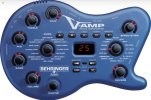The proposed presence knob positioning has no effect on the sound aside from where the knob pointer is pointing (with regards to this presence control's pot taper), and the ease of obtaining a preferred setting over 100% of the pot's travel vs only 25% (which reduces the control's granularity).
Ultimately it's a trivial matter within the big picture, and the calls for Fractal to do a bunch of work to provide both concepts for all amp models are ridiculous to say the least. The only benefit of the non-idealized pot taper is for people who don't use their ears, who instead use their eyes and prefer to copy settings, or own the real amps, but to each their own.
What's funny is that the vast majority of these various modeled tube amps are way more similar that they are different, and things like the cab(s)/speaker(s), mic(s)/mic locations/recording and playing environments/mic-pre(s), picks/fingers, pups, scale lengths, string types, tunings, and drives used have as much effect, or more often vastly more effect on the final results than the various tube amp's themselves (which makes pot tapers an even smaller point of contention in our view).
We Toobians are now officially withdrawing our vote for idealized (even though this is impossible via the poll's GUI?), and we'll merely vote present going forward seeing we're now officially neutral on the matter.





